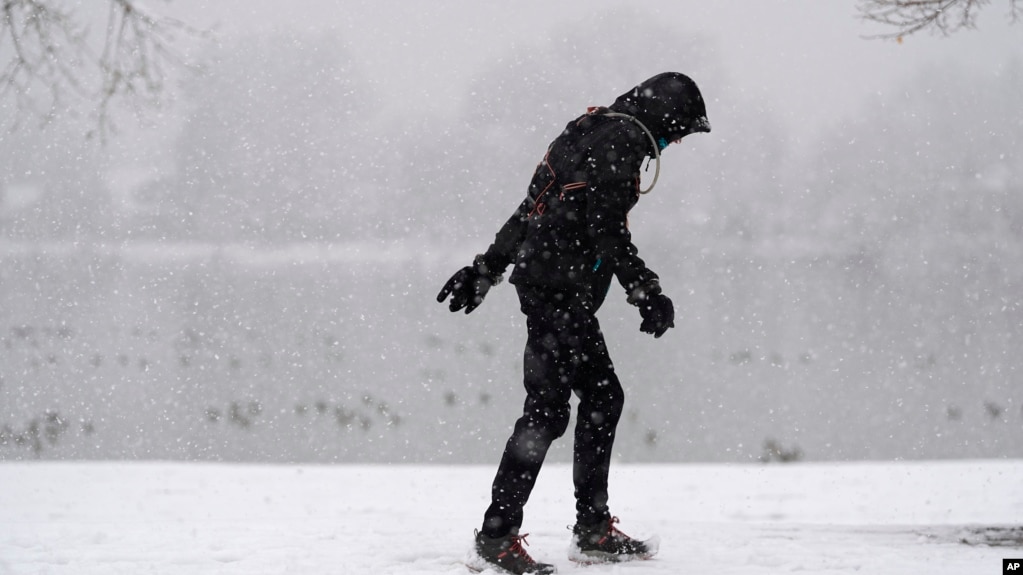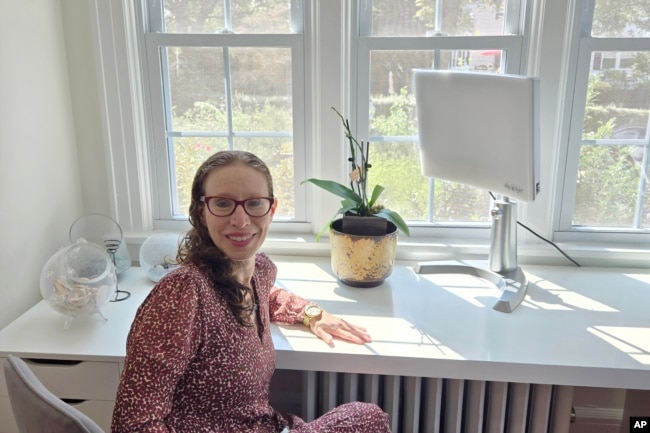AUDIO
How to Keep from Feeling Down in the Winter

As fall and winter come to some parts of the world, daylight hours grow shorter. This lack of light can cause seasonal depression.
“It (is) a feeling of panic, fear, anxiety and dread all in one,” said Germaine Pataki. The 63-year-old woman living in Saskatoon, Saskatchewan, Canada, is among the millions of people estimated to have seasonal affective disorder, or SAD.
To deal with her condition, Pataki uses yoga, walking, and an antidepressant medication. She is also part of a Facebook group for people with SAD and helps others deal with the condition. Pataki said, “This gives me purpose.”
People with SAD usually have depression that begins in the fall and eases in the spring or summer. Changing the clocks back to standard time, which happens in autumn in the United States, can also cause SAD to start.
Medical experts say there is a milder form, called subsyndromal SAD. There is also summer seasonal depression but less is known about that.
In 1984, a team led by Dr. Norman Rosenthal, then a researcher at the National Institutes of Health, first described SAD. He invented the term.
What causes seasonal affective disorder?
Scientists are still learning the causes of seasonal affective disorder. They have found that specialized cells in our eyes turn the blue wavelength of the light into neural, or brain signals. These signals affect mood and wakefulness, or alertness.
Sunlight has a lot of blue light. So, when the cells sense this blue light, the alertness centers of our brains turn on. We feel more alert and possibly even happier.
Kathryn Roecklein is a researcher at the University of Pittsburgh. She tested people with and without SAD to see how their eyes reacted to blue light. As a group, people with SAD were less sensitive to blue light than others, especially during winter months. That suggests a cause for wintertime depression.
“In the winter, when the light levels drop, that, combined with a lower sensitivity, might be too low for healthy functioning, leading to depression,” Roecklein said.
Miriam Cherry is 50 years old and lives in New York state. She spent the summer planning how she would deal with her winter depression. “It’s like clockwork,” Cherry said. “The sunlight is low. The day ends at 4:45, and suddenly my mood is horrible.”

Light therapy can help
Many people with SAD respond to light therapy, said Dr. Paul Desan of Yale University’s Winter Depression Research Clinic. The therapy devices give off light about 20 times brighter than regular indoor light.
“The first thing to try is light,” Desan said. “When we get patients on exposure to bright light for a half an hour or so every morning, the majority of patients get dramatically better. We don’t even need medications.”
There is research that supports the idea that using a light that has a brightness of about 10,000 lux can be helpful. Lux is a measurement of brightness.
The research suggests that a person use it for 30 minutes every morning. Desan said this can help not only people with SAD but also those with less-severe, low moods in winter.
What else might work?
Experts suggest other forms of treatment. Doctors often suggest antidepressant medications as a first-line treatment for SAD. They also suggest going to bed and waking up at about the same time each day. Also, exercise such as walking outside, even on cloudy days, can help.
Kelly Rohan is a researcher at the University of Vermont. Rohan said another treatment is talk therapy. Also called cognitive behavioral therapy, or CBT, Rohan said it has been shown in studies to have more long-lasting effects. CBT involves working with a therapist to identify and change unhelpful thoughts.
“A very common thought that people have is ‘I hate winter,’” Rohan said. She suggests that people instead say, “I prefer summer to winter.”
Working with a therapist can help people take small steps toward having fun again, Rohan said. Try planning undemanding but enjoyable activities to break out of a bad mood. Rohan said simply meeting a friend for coffee can help.
People with SAD have half the year to create helpful methods. Some have found things that work for them although they might not be the subject of scientific research.
For example, in Folsom, California, Elizabeth Wescott says she believes a kind of water therapy helps her. The 69-year-old uses water therapy used in sports medicine. When she showers, she changes between hot and cold water. She also uses a light box and takes an antidepressant. “I’m always looking for new tools,” Wescott said.
In New York, Miriam Cherry grows the earliest blooming flowers. They bloom as early as February.
“That’s going to be a sign to me that this isn’t going to last forever,” Cherry said. “It will get better, and spring is on the way.”
__________________________________________
Words in This Story
panic –n. a sudden overpowering fright
anxiety –n. a state of extreme nervousness and worry
dread –n. fear of something that might happen
mood –n. the way a person feels; a person’s emotional state
alertness –n. the ability to sense things happening around you
horrible –adj. terrible or causing fear
therapy –n. treatment of an abnormal state of the mind or body
exposure –n. the condition of sensing something or coming into contact with somethings
dramatically –adv. a lot or to a notable degree
prefer –v. to like better or best
bloom –v. to produce flowers
https://learningenglish.voanews.com/a/how-to-keep-from-feeling-down-in-the-winter/7854053.html